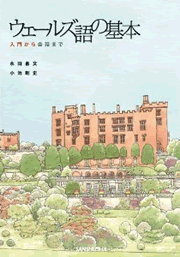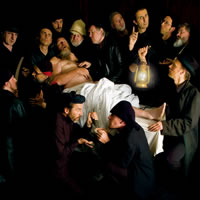Here’s a recording in a mystery language, which features someone reading part of a story.
Can you identify the language, and do you know where it’s spoken?
Here’s a recording in a mystery language, which features someone reading part of a story.
Can you identify the language, and do you know where it’s spoken?
The title of this post is a song writing tips from Kate Rowe’s website – she’s an Australian singer/song writer who support the Spooky Men’s Chorale on their recent UK tour. I saw them in Caernarfon and found the website after that, saw the tips and thought that could apply, with some adaptations to language learning.
Here they are:
• Do it because it’s fun, not because you want to achieve something.
• Write a lot, often, to get used to your own voice and trains of thought.
• Rather than “coming up with” ideas, relax and let images start appearing in your mind.
• Let your mind tell you a story, and write or record exactly what you see and hear.
• Write fast, without editing. Get all the ideas down, even if they seem ridiculous.
• Later, take the most interesting bits. It might only be a sentence! Just keep writing.
Even without changes, these apply to writing in a language you’re learning.
I think it’s better to learn a language because it’s fun, it’s something you enjoy doing, and it’s a language/culture you really like, rather than because you feel you should, or you think the language might be useful one day. I sometimes learn languages to try out different language courses, and unless I fall in love with the languages or the cultures of people who speak them, or the countries where they’re spoken, I find my motivation for them tends to diminish and disappear after a while.
It helps to practise all language skills – listening, speaking, reading and writing, and indeed typing, as often as you can.
The third tip isn’t perhaps directly relevant to language learning, but when you’re reading or listening the your L2, it can help to relax and let it flow into your eyes and ears without worrying about things you don’t understand. The meanings of unknown words that come up frequently is likely to become clear from the context.
Stories are useful for language learning – reading and listening to them, and making them up yourself just for fun, and/or to practise using particular grammatical structures and vocabulary.
When writing in a foreign language it might help to write fast, not worry about mistakes, and to edit later.
In The Broken Ear and Tintin and the Picaros, which tell the story of Tintin’s adventures in the fictional South American republic of San Theodoros, Tintin and friends encounter some native people in the jungle who belong to the Arumbaya and Rumbaba tribes. They speak in a what looks at first glance to be a foreign language, but when you look closer you realise that it’s English written and spelled in an unusual way.
Here are some examples:
– Ahw wada lu’vali bahn chaco conats! – Oh, what a lovely bunch of coconuts!
– Owar ya? Ts goota meecha mai ‘tee. – How are you? It’s good to meet you, matey.
– Gi’ dahda vit! – Get out of it!
– Owzah g’rubai? – How’s the grub, eh?
– Sum in ‘ksp wivit! – Something’s up with it!
These examples are from the English translations of these books, in which the translators used a phonetic rendering of Cockney English [source].
In the original French version, Hergé based Arumbaya and Rumbaba on Marols or Marollien, a Flemish dialect spoken in Brussels, which he heard from his grandmother [source].
This is an interesting way of conveying that a foreign language is being spoken while allowing readers to understand what’s being said. Do you know who these ‘languages’ are represented in other translations of these books?
Recently I’ve been tinkering with the design of Omniglot. This doesn’t involves any major changes, at least I’m not planning to make any major changes at the moment – it’s more a case of changing colours and logos, and trying to improve menus. You might have noticed a few changes already – for example there are new links at the top of some pages, and a new menu on the side of others. You can see more changes on this page.
Any comments and suggestions are welcome.
Is there anything about Omniglot you’d like to see changed or improved?
Here’s a recording in a mystery language.
Can you identify the language, and do you know where it’s spoken?
I will be singing with the Bangor Community Choir and many other choirs from around the UK at Sing for Water London, part of the Thames Festival, on Sunday 11th September 2011. The aim is to raise funds for Water Aid.
The Bangor Community Choir will be singing by HMS Belfast on the South Bank from about 12.15pm, and the massed choirs will be singing in the Scoop next to City Hall from 2pm.
Please come along if you can, and if you’d like to contribute to Water Aid, please go to: http://www.justgiving.com/simon-ager/
I decided to have a go at learning Breton today and listened to some of Le Breton sans peine. I just listened without looking at the book to see if I could understand anything – one of my friends is convinced that Breton has more similarities with Welsh than with Cornish, but I thought that Breton is closer to Cornish, so I decided to test this.
I speak Welsh more or less fluently, and do know a few Breton words already, including degemer mat (welcome), trugarez (thank you = trugaredd, ‘mercy / compassion’, in Welsh), pelc’h emañ …? (where is …? = pa le, ‘which place?’, in Welsh), and I was able to guess the means of some words that sound similar to their Welsh equivalents: mor (sea – môr in Welsh), ti (house – tŷ in Welsh), glas (blue/green – glas in Welsh). I could also understand some of the numbers and some French loanwords, apart from that though, I had no idea, or only the vaguest idea, what they were talking about most of the time.
This is just my own impression, but it seems that mutual intelligibility between Welsh and Breton is very limited. The stories of Breton onion sellers in Wales being able to talk to the local Welsh speakers in Breton and be understood are perhaps exaggerated. Or perhaps the onion sellers, known as Sioni Wynwns (Johnny Onions) in Welsh, learnt enough Welsh to have basic conversations with Welsh speakers.
While I was in the Isle of Man earlier this year I heard some Cornish and was able to make some sense of it, but the Breton I heard there made very little sense to me.

According to a report I found today, a textbook for Japanese people wanting to learn Welsh entitled ウェールズ語の基本 (Wēruzugo no Kihon – “Basic Welsh”) by Dr Yoshifumi Nagata (永田喜文) and Takeshi Koike (小池剛史) was recently published.
Dr Nagata teaches Welsh culture at universities in Japan and developed an interest for the Welsh language through the Welsh poetry of R. S. Thomas. While trying to learn Welsh in Japan he was frustrated by the lack of material in Japanese so decided to produce the textbook. Takeshi Koike learnt Welsh in Lampeter and speaks and writes it fluently and has published several works on the Welsh language.
This isn’t the only Welsh language course in Japanese though: on Amazon.co.jp I found 毎日ウェールズ語を話そう (Let’s Talk Welsh Every Day) by Hiroshi Mizutani (水谷宏), which was published in 1996.
Do you know of any other resources in Japanese for Welsh learners?
Oes llawer o bobl yn dysgu Cymraeg yn Siapan?
日本ではウェールズ語を勉強する人がたくさんいますか?

Jesarn hie mee dys keirdlann as co-unnaneys yindyssagh ‘syn Galeri ayns Caernarfon lesh ny Spooky Men’s Chorale, sheshaght chiaullee voish yn Austrail ta jannoo turrys mygeayrt yn Reeriaght Unnaneyssit ec y traa t’ayn. T’ad ny ard arraneyderyn, as feer aitt as ommidjagh myrgeddin, as t’ad goaill arraneyn as yn Çhorshey, arraneyn cadjin lhied “Dancing Queen” (lesh blassyn Soolynagh as idd Loghlynagh) as “Boogie Wonderland” (dy moal as dy arrymagh), as arraneyn oc hene, lhied “Don’t Stand Between a Man and His Tool”, “Sometimes I Forget Things” as “Concrete”, ynsit shin ‘syn keridlann.
On Saturday I went to a workshop and concert at the Galeri in Caernarfon with the Spooky Men’s Chorale, a choir from Australia who are currently touring the UK. They are excellent singers and hilariously silly, and sing songs from Georgia, pop songs like “Dancing Queen” (with Swedish accents and Viking helmets) and “Boogie Wonderland” (slowly and solemnly), as well as their own songs, such as “Don’t Stand Between a Man and His Tool”, “Sometimes I Forget Things” and “Concrete”, which we learnt in the workshop.